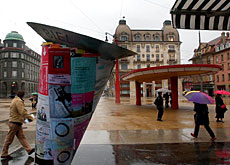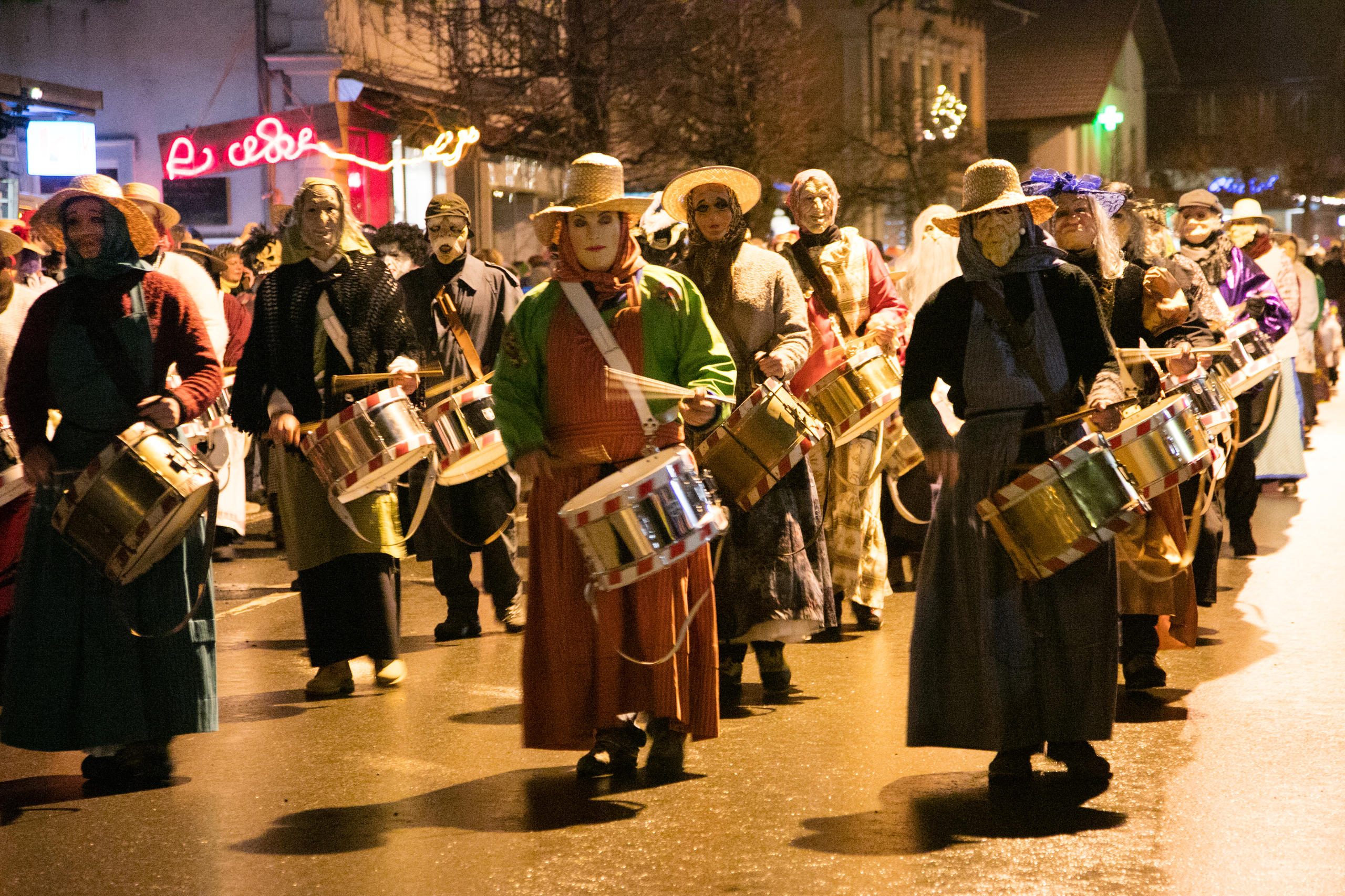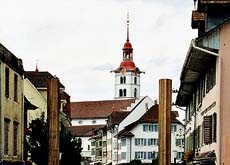Modern architecture earns Biel heritage prize

Switzerland’s largest bilingual city, Biel, has been awarded the Wakker prize for the protection of the country’s heritage.
The prize jury commended the town’s conservation of its 20th-century architecture and enhancement of public spaces.
“Biel is a city with corners and edges,” said Mayor Hans Stöckli. “But it’s not a town that was built to attract tourists.”
Biel is not receiving the prize for its much-admired old town, but for improvements to public areas in neighbourhoods that sprung up at the beginning of the 20th century.
“Biel has managed, after years of neglect, to enhance its open spaces and protect its 20th-century building heritage, all the while improving the quality of its new buildings,” wrote the Swiss Heritage Society, which awards the Wakker prize.
Pedestrian zones
A single pedestrian zone now connects the old town to the railway station, with a central square serving as its focal point. Renzo Piano-designed streetlights line the pavement at regular intervals.
Access to the lake has also been improved with another pedestrian zone which takes pedestrians past the 1960s congress building and the 1930s Volkshaus office building. Both of these buildings have been renovated.
Much of the work was carried out during preparations for Expo.02, Switzerland’s national exhibition in 2002. The Expo sped up the normally slow political decision-making process and the planning process.
“The Expo gave us a lot of leverage and we were able launch many projects,” Stöckli told swissinfo. “We were already considering some projects, but it would have taken longer to complete them without the exhibition.”
Recession
The early 1990s found Biel still shaking off the effects of the downturn which struck the watch industry in the 1970s and 1980s. Companies had left town, thousands of jobs were lost, neighbourhoods and buildings were run down, and graffiti was everywhere.
To make the city attractive once again, Stöckli, a Social Democrat who was elected mayor in 1990, pushed through a programme called “Savings and investment”.
Around SFr15 million ($11.9 million) has been invested each year to develop the city’s infrastructure.
Marketing specialists also began to sell the city as a communications hub, rather than as a watchmakers’ town. While the Swatch group remains Biel’s biggest employer, thousands of new jobs have been created in the communications sector.
“We want to make the transition from an industrial to a service-based city to make Biel more attractive to investors,” said Stöckli, who is confident development will continue in the coming years.
The city has a hands-on approach to development. It owns around 25 per cent of the town’s building land, giving the authorities more clout in negotiations with investors who lease it.
This approach has paid dividends recently, with all new apartments in the city sold or rented out.
Tradition
Politics and development have gone hand-in-hand for a long time in Biel. In the 1920s and 1930s, modern architectural development had as much to do with design as policy.
Biel’s mayor at the time – another Social Democrat, Guido Müller – wanted to attract investors and ensure jobs for the local population.
In one case, the city built an assembly-line building for General Motors, as well as office space. Housing for workers also sprung up the same time, as the city sold land on the cheap to building cooperatives.
To ensure that construction didn’t get out of hand, the city wrote up strict building regulations calling for, among other requirements, flat roofs. Biel even called itself the “city of the future”.
Peter Egli, an architect at the Swiss Heritage Society, says that not many people understand how valuable this industrial-era construction is.
“But Biel is one city that places more value on these buildings,” he added.
swissinfo, Andreas Keiser (translation: Scott Capper)
“Heimatschutz” – the foundation for the protection of the Swiss national heritage – awards the Wakker prize every year.
The prize, worth SFr20,000, was awarded for the first time in 1972, thanks to a bequest from Geneva businessman Henri-Louis Wakker.
Recently, awards have focused on promoting heritage through innovative intervention.

In compliance with the JTI standards
More: SWI swissinfo.ch certified by the Journalism Trust Initiative










You can find an overview of ongoing debates with our journalists here . Please join us!
If you want to start a conversation about a topic raised in this article or want to report factual errors, email us at english@swissinfo.ch.